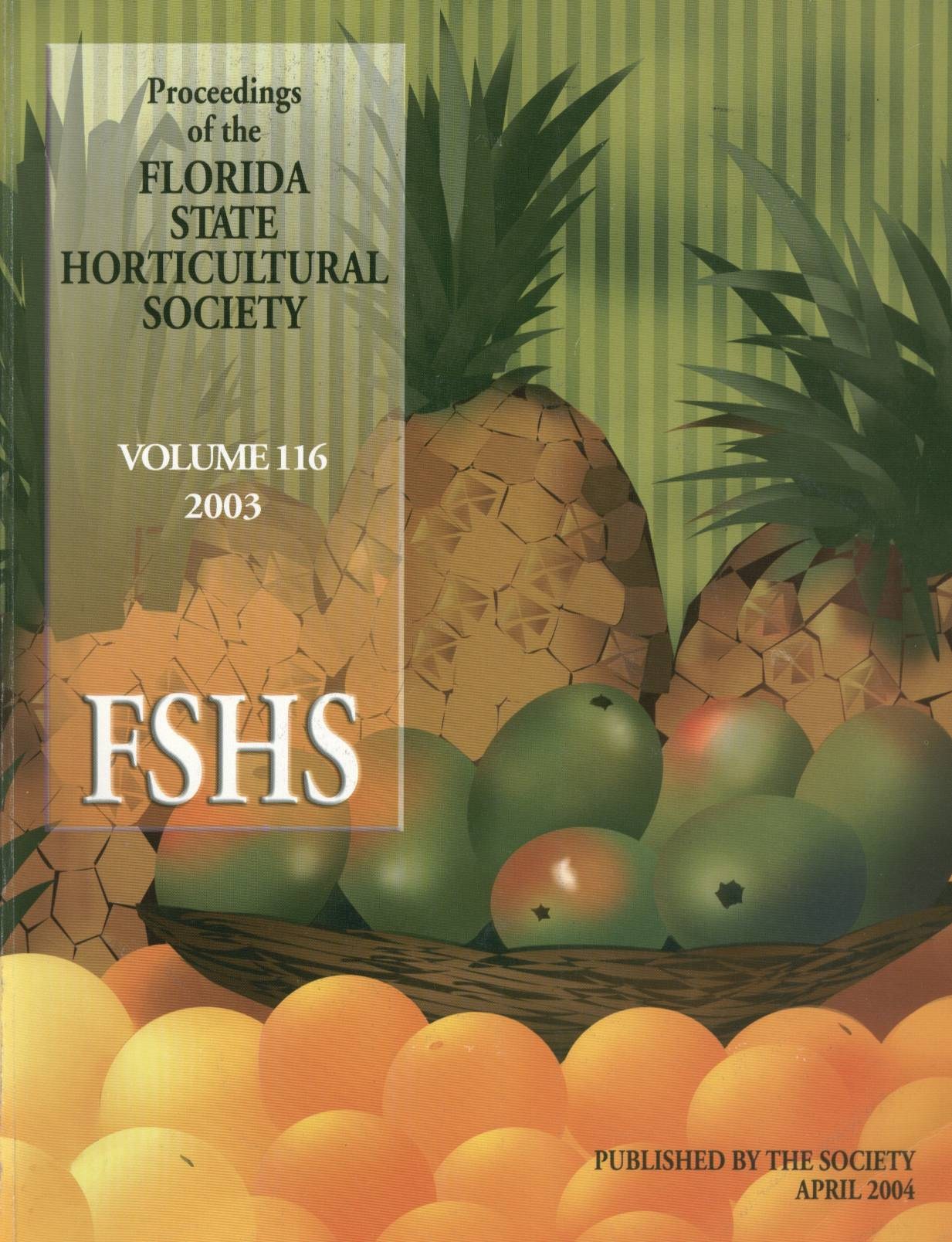Abstract
Purple nutsedge (Cyperus rotundus L.) and yellow nutsedge (C. esculentus L.) are serious problems in much of the vegetable production area of north Florida. Methyl bromide fumigation has traditionally provided excellent control of nutsedge in field plasticulture systems in Florida. This trial was conducted to evaluate alternative fumigants to methyl bromide due to the proposed phase out of methyl bromide in 2005. Plots were established in the spring of 2002 on Lakeland fine sand near Live Oak, Florida. The experimental design was a split plot with soil fumigants assigned to main plots and polyethylene mulch types to subplots. Fumigant and mulch treatments were applied on 6 Mar. 2002. Three soil fumigant treatments were evaluated in the trial; 1) no fumigant, 2) 1,3- dichloropropene (1,3-D) plus chloropicrin (pic) soil injected, and 3) 1,3-D plus chloropicrin chemigated via drip tape. The two polyethylene mulch treatments included: 1) standard high density polyethylene and 2) a virtually impermeable film (VIF). Purple nutsedge populations were totally controlled when 1,3- D plus chloropicrin via drip tape chemigation or via soil injection was used with VIF film. When high density polyethylene mulch was used, nutsedge populations were reduced by both 1,3-D plus pic treatments when compared to the untreated plots. Soil gas concentrations of 1,3-D were consistently higher in soil under VIF than high density polyethylene mulch plots from 5 to 15 days after application.

